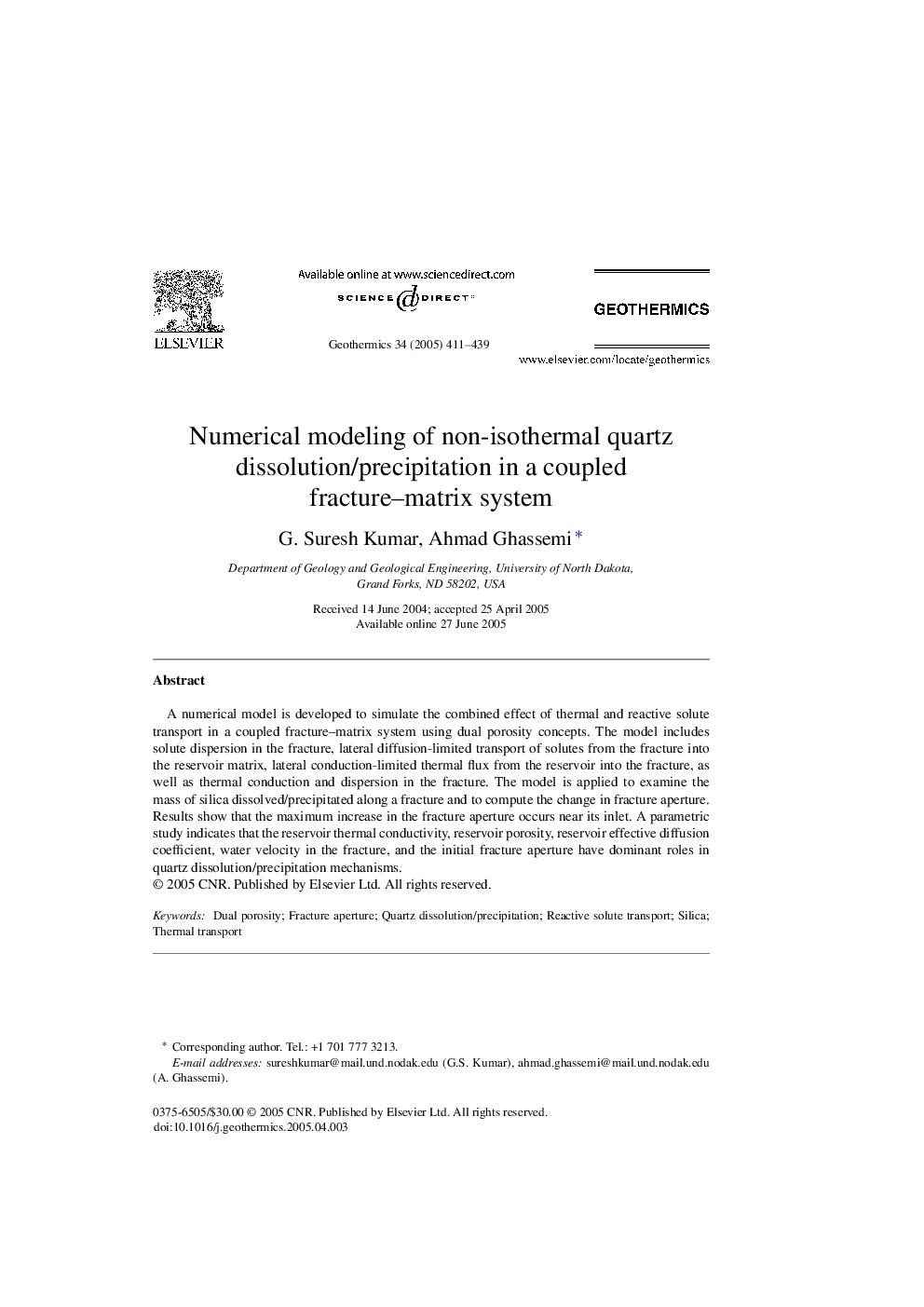| Article ID | Journal | Published Year | Pages | File Type |
|---|---|---|---|---|
| 10687600 | Geothermics | 2005 | 29 Pages |
Abstract
A numerical model is developed to simulate the combined effect of thermal and reactive solute transport in a coupled fracture-matrix system using dual porosity concepts. The model includes solute dispersion in the fracture, lateral diffusion-limited transport of solutes from the fracture into the reservoir matrix, lateral conduction-limited thermal flux from the reservoir into the fracture, as well as thermal conduction and dispersion in the fracture. The model is applied to examine the mass of silica dissolved/precipitated along a fracture and to compute the change in fracture aperture. Results show that the maximum increase in the fracture aperture occurs near its inlet. A parametric study indicates that the reservoir thermal conductivity, reservoir porosity, reservoir effective diffusion coefficient, water velocity in the fracture, and the initial fracture aperture have dominant roles in quartz dissolution/precipitation mechanisms.
Related Topics
Physical Sciences and Engineering
Earth and Planetary Sciences
Geochemistry and Petrology
Authors
G. Suresh Kumar, Ahmad Ghassemi,
